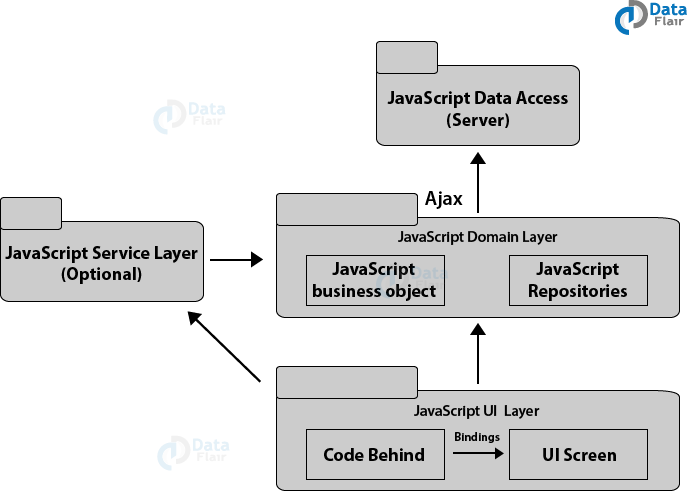
Mastering JavaScript Design Patterns: A Comprehensive Guide for Modern Developers
A Deep Dive into JavaScript Design Patterns for Scalable Applications
In the ever-evolving landscape of web development, writing code that simply “works” is no longer enough. As applications grow in complexity, the need for maintainable, scalable, and efficient code becomes paramount. This is where JavaScript Design Patterns come into play. They are not specific libraries or frameworks, but rather time-tested, reusable solutions to commonly occurring problems within a given context. Understanding and applying these patterns can dramatically improve your code quality, facilitate collaboration among developers, and make your applications more robust and easier to debug. This guide provides a comprehensive tutorial on essential design patterns, complete with practical examples using modern JavaScript (ES6 and beyond), to help you write cleaner, more professional code.
From managing object creation to handling asynchronous operations and structuring complex applications, design patterns provide a shared vocabulary and a set of blueprints for building sophisticated systems. Whether you’re working with vanilla JavaScript, a popular framework like React or Vue.js, or building a backend with Node.js, a solid grasp of these concepts is a hallmark of an advanced developer. In this article, we’ll explore creational, structural, and behavioral patterns, demonstrating their real-world applications in DOM manipulation, API interactions, and asynchronous logic.
Section 1: Foundational Patterns: Creational and Structural
Creational and structural patterns form the bedrock of object-oriented design. Creational patterns provide various object creation mechanisms, which increase flexibility and reuse of existing code. Structural patterns explain how to assemble objects and classes into larger structures while keeping these structures flexible and efficient. Let’s explore two of the most fundamental patterns in modern JavaScript development.
The Singleton Pattern: Ensuring One and Only One
The Singleton pattern ensures that a class has only one instance and provides a global point of access to it. This is incredibly useful for managing shared resources or state, such as a database connection, a logging service, or a configuration manager, where having multiple instances would cause conflicts or unnecessary overhead.
In modern JavaScript, we can implement a clean Singleton using an ES6 Class. The key is to have a private static property to hold the instance and a static method that either creates a new instance or returns the existing one.
// Singleton Pattern for a Configuration Manager
class ConfigManager {
static #instance;
constructor() {
if (ConfigManager.#instance) {
return ConfigManager.#instance;
}
// Initial configuration settings
this.settings = {
apiUrl: "https://api.example.com",
theme: "dark",
version: "1.0.0"
};
ConfigManager.#instance = this;
}
getSetting(key) {
return this.settings[key];
}
setSetting(key, value) {
this.settings[key] = value;
}
static getInstance() {
if (!ConfigManager.#instance) {
ConfigManager.#instance = new ConfigManager();
}
return ConfigManager.#instance;
}
}
// Usage:
const config1 = ConfigManager.getInstance();
const config2 = ConfigManager.getInstance();
console.log(config1 === config2); // true - both variables point to the same instance
config1.setSetting('theme', 'light');
console.log(config2.getSetting('theme')); // "light" - changes are reflected everywhereThe Module Pattern: Encapsulation with ES Modules
The Module pattern is one of the most important in JavaScript for creating well-structured, encapsulated code. It helps prevent global namespace pollution, where variables from different scripts can accidentally clash. While historically implemented with Immediately Invoked Function Expressions (IIFEs), modern JavaScript has a native, far superior solution: ES Modules.

ES Modules (`import`/`export`) are the standard way to organize code into reusable and maintainable files. This pattern is fundamental to any modern JavaScript project, supported by all major browsers and tools like Vite and Webpack. It allows you to explicitly define which parts of a file are public (exported) and which remain private to the module.
// File: /utils/api.js - An API utility module
const API_BASE_URL = 'https://jsonplaceholder.typicode.com';
// This function is private to the module
const handleResponse = (response) => {
if (!response.ok) {
throw new Error(`HTTP error! status: ${response.status}`);
}
return response.json();
};
// Exported functions form the public API of this module
export const getPosts = () => {
return fetch(`${API_BASE_URL}/posts`).then(handleResponse);
};
export const getPostById = (id) => {
return fetch(`${API_BASE_URL}/posts/${id}`).then(handleResponse);
};
// File: /app.js - Main application file
// We import only what we need
import { getPosts } from './utils/api.js';
async function displayPosts() {
try {
const posts = await getPosts();
console.log('Fetched Posts:', posts.slice(0, 5)); // Log first 5 posts
} catch (error) {
console.error('Failed to fetch posts:', error);
}
}
displayPosts();Section 2: Behavioral Patterns for Dynamic Interactions
Behavioral patterns are concerned with algorithms and the assignment of responsibilities between objects. They describe how objects interact and distribute responsibility, making systems more flexible and communication more efficient. These patterns are crucial for managing state and handling events in dynamic web applications.
The Observer Pattern: Keeping Objects in Sync
The Observer pattern defines a one-to-many dependency between objects so that when one object (the subject) changes state, all its dependents (the observers) are notified and updated automatically. This pattern is the backbone of event-driven programming. It’s heavily used in JavaScript for handling DOM events, in state management libraries like Redux, and in the event emitter system of Node.js.
Let’s create a simple newsletter subscription system to demonstrate this. The `Newsletter` is the subject, and subscribers are the observers.
// The Subject (or Publisher)
class Newsletter {
constructor() {
this.subscribers = [];
}
subscribe(fn) {
this.subscribers.push(fn);
console.log(`New subscriber added.`);
}
unsubscribe(fn) {
this.subscribers = this.subscribers.filter(subscriber => subscriber !== fn);
console.log(`Subscriber removed.`);
}
// Notify all subscribers of a new post
notify(post) {
console.log(`\n--- Notifying ${this.subscribers.length} subscribers about a new post: "${post.title}" ---`);
this.subscribers.forEach(subscriber => subscriber(post));
}
}
// Observer functions
const subscriber1 = (post) => {
console.log(`Subscriber 1 received: A new article titled "${post.title}" is available at ${post.url}`);
};
const subscriber2 = (post) => {
// This could be a function that updates a UI element
const notificationElement = document.getElementById('notification-banner');
if (notificationElement) {
notificationElement.textContent = `New Post: ${post.title}`;
notificationElement.style.display = 'block';
}
console.log(`Subscriber 2 (UI Updater) notified.`);
};
// Usage:
const techNewsletter = new Newsletter();
techNewsletter.subscribe(subscriber1);
techNewsletter.subscribe(subscriber2);
// Simulate publishing a new article
techNewsletter.notify({
title: "Mastering JavaScript Async/Await",
url: "/blog/js-async-await"
});
// One subscriber leaves
techNewsletter.unsubscribe(subscriber1);
// Publish another article
techNewsletter.notify({
title: "A Guide to Web Performance Optimization",
url: "/blog/web-performance"
});Section 3: Advanced Patterns for Modern Asynchronous JavaScript
Modern web applications are inherently asynchronous, constantly fetching data, responding to user input, and performing background tasks. Traditional design patterns have been adapted, and new patterns have emerged to handle the complexities of asynchronous code gracefully. Understanding these is essential for building responsive, non-blocking applications.
The Promise & Async/Await Pattern: Taming Asynchronicity
While not a “Gang of Four” pattern, the evolution from callbacks to Promises and then to `async/await` is the single most important pattern for managing asynchronous operations in `Modern JavaScript`. It transforms convoluted, nested callback code (known as “callback hell”) into clean, readable, and maintainable synchronous-looking code. This pattern is fundamental when working with any `JavaScript API`, from `JavaScript Fetch` for REST APIs to interacting with databases in a `Node.js JavaScript` environment.
Let’s see this pattern in action by fetching user data from a public API.

// A practical example using the Fetch API with Async/Await
async function fetchUserData(userId) {
const apiEndpoint = `https://jsonplaceholder.typicode.com/users/${userId}`;
// The 'try...catch' block is the standard way to handle errors in async/await
try {
console.log(`Fetching data for user ${userId}...`);
// 'await' pauses the function execution until the Promise is resolved
const response = await fetch(apiEndpoint);
// Check if the request was successful
if (!response.ok) {
throw new Error(`Network response was not ok: ${response.statusText}`);
}
// 'await' is used again to parse the JSON body
const userData = await response.json();
// Update the DOM with the fetched data
updateUserProfile(userData);
} catch (error) {
console.error('Fetch error:', error);
displayErrorMessage('Failed to load user data. Please try again later.');
}
}
// Helper functions to interact with the JavaScript DOM
function updateUserProfile(user) {
const nameEl = document.getElementById('user-name');
const emailEl = document.getElementById('user-email');
if (nameEl && emailEl) {
nameEl.textContent = user.name;
emailEl.textContent = user.email;
}
}
function displayErrorMessage(message) {
const errorEl = document.getElementById('error-message');
if (errorEl) {
errorEl.textContent = message;
errorEl.style.display = 'block';
}
}
// Trigger the fetch operation for a specific user
fetchUserData(1);The Facade Pattern: Simplifying Complexity
The Facade pattern provides a simplified, higher-level interface to a larger body of code, such as a complex library or a set of APIs. It hides the underlying complexity and makes the subsystem easier to use. This is particularly useful when you need to perform a multi-step operation, like fetching and combining data from multiple sources, or simplifying a complex `Canvas JavaScript` animation sequence.
Imagine you need to get a user’s profile, their latest post, and their comments. This requires three separate API calls. A facade can wrap this logic into a single, simple function.
// Facade Pattern to simplify fetching a user's complete profile data
const api = {
getUser: (id) => fetch(`https://jsonplaceholder.typicode.com/users/${id}`).then(res => res.json()),
getPosts: (userId) => fetch(`https://jsonplaceholder.typicode.com/posts?userId=${userId}`).then(res => res.json()),
getComments: (postId) => fetch(`https://jsonplaceholder.typicode.com/comments?postId=${postId}`).then(res => res.json()),
};
// The Facade function
async function getFullUserProfile(userId) {
try {
// Use Promise.all to run API calls in parallel for better performance
const [user, posts] = await Promise.all([
api.getUser(userId),
api.getPosts(userId)
]);
if (posts.length > 0) {
const latestPost = posts[0];
const comments = await api.getComments(latestPost.id);
latestPost.comments = comments;
user.latestPost = latestPost;
}
return user;
} catch (error) {
console.error("Failed to get full user profile:", error);
return null;
}
}
// Simple to use, hides all the complex logic
getFullUserProfile(1).then(profile => {
if (profile) {
console.log("--- Full User Profile (Facade) ---");
console.log("User:", profile.name);
console.log("Latest Post:", profile.latestPost.title);
console.log("Comments on Post:", profile.latestPost.comments.length);
}
});Section 4: Best Practices, Performance, and Modern Tooling
Knowing design patterns is only half the battle; knowing when and how to apply them is what separates good developers from great ones. It’s crucial to avoid the pitfall of over-engineering by applying a complex pattern where a simpler solution would suffice. Always favor simplicity and clarity.
When to Use (and Not Use) Patterns
A common mistake is to force a pattern onto a problem. Instead, let the problem guide you to the pattern. Start with the simplest possible solution. As your code evolves and you notice recurring problems—such as tightly coupled components, complex object creation logic, or messy asynchronous code—then consider if a design pattern can provide a cleaner structure. For example, if you find yourself passing the same set of services to multiple classes, you might need a Dependency Injection pattern. If you’re writing repetitive `if/else` or `switch` statements to create objects, a Factory pattern could be the answer.
Performance and Modern Frameworks
While patterns improve structure, they can sometimes introduce a small layer of abstraction that might have a minor `JavaScript Performance` impact. For instance, an Observer pattern with thousands of subscribers could be slow to notify. However, in most web applications, the organizational benefits far outweigh these negligible costs. Modern `JavaScript Frameworks` like React, Vue.js, and Svelte often have built-in, highly optimized implementations of these patterns. For instance, React’s state management and component lifecycle are a form of the Observer pattern. Angular’s entire architecture is built around Dependency Injection. Understanding the underlying patterns will give you a deeper appreciation of how these frameworks operate.
Furthermore, tools like `JavaScript TypeScript` enhance the implementation of design patterns by providing static typing, which makes interfaces and contracts between different parts of your code explicit and less error-prone. `JavaScript Bundlers` like `Vite` and `Webpack` are essential for making the `ES Modules` pattern work efficiently in production.
Conclusion: The Path to Writing Better JavaScript
JavaScript design patterns are not rigid rules but flexible guidelines that provide a common language and proven solutions for building complex software. By mastering patterns like the Singleton, Module, Observer, and Facade, you can write code that is not only functional but also scalable, maintainable, and easy for other developers to understand. The key is to internalize the principles behind each pattern—encapsulation, abstraction, and separation of concerns—and apply them thoughtfully.
The journey doesn’t end here. Continue to explore other patterns, refactor your existing projects to incorporate them, and observe how they are used in the source code of popular libraries and frameworks. By integrating these `JavaScript Best Practices` into your daily workflow, you will elevate your skills and be well-equipped to tackle the challenges of modern web development, creating applications that are robust, efficient, and built to last.



